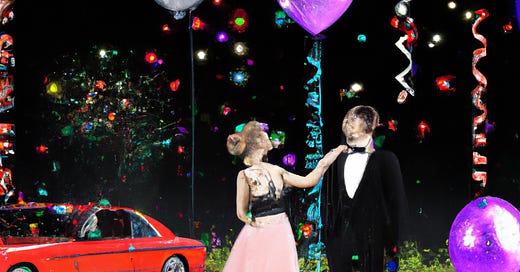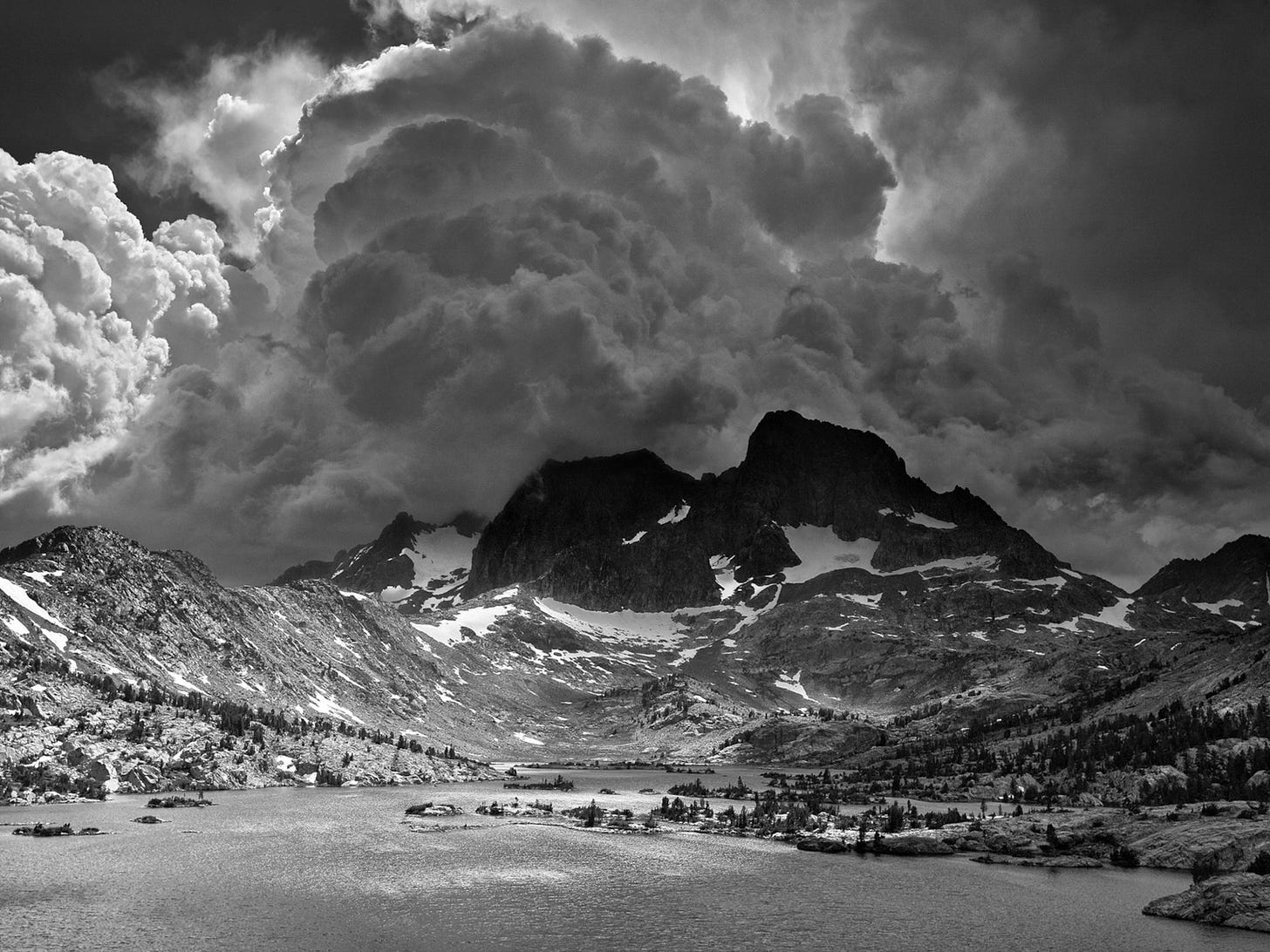All of the amazing AI tools allow us to create works of art or, when I do it, crap as seen above.
Nonetheless, the speed at which the AI world is developing is accelerating. Don’t take my word for it, but VC money; Stability AI, the startup behind Stable Diffusion, raises $101M
But anyone hoping to wield these two-handed swords with dexterity need one skill and one skill only:
Prompt Mastery
asking GTP-3 with a prompt: what is a prompt?
A prompt is a question or statement that is used to elicit a response from someone.Prompt challenges are that output (images, text, video, audio) change drastically from time to time. A simple prompt is not guaranteed to produce the same outcome every time. In my experience, it almost never does1
My experiment subject is the photographer Ansel Adams - a favourite of mine. Below an example of Ansel’s work - more here
The first is trying to throw a curveball at the AI since Ansel mostly photographed, so asking for an illustration is tough, but lets see.
“an illustration of a beautiful sunrise in a bay in the style of Ansel Adams“
Ok - I guess Midjourney wins for result, but DALL-E for actual reference. Dreamstudio took too much acid.
“a realistic photograph of a beautiful sunrise in a bay in the style of Ansel Adams”
Ok, Dreamstudio just hammers on with the acid. Midjourney is starting to get it, DALL-E also moved towards something more realistic.
“winter river, hyperrealistic, ansel adams”
Ok, I’m pretty happy with the last one and this was made with an even “simpler” prompt. Midjourney made 4 variations, I went with one and upscaled it. I have seen amazing work with Stabile Diffusion (the engine behind Dreamstudio) so I’m a bit puzzled on the quality of the results.
As you can see, pretty inconsistent and comparing results with the two prompt “styles”, the images are very different.
This is actually great. I personally love the randomness of what comes out of these magnificent beasts more than results that were 1:1 every time no matter what. And I love that you can become rapidly better by trying things out.
Not only when it comes to the technical parameters, but also the imaginative parts - the “a red sunrise on mars looking towards a tiny earth”-example.
But at the center of prompt mastery are the creative descriptions + the parameters (the things you can tweak outside of the actual prompt2) = the things you put in your prompt. These are words that allow you to control with quite fine detail what you want the AI to create for you. A few examples of parameter explanations:
Final worlds (for now)
My takeaway so far is that you need to have both the technical skill (parameters) and your imaginative skill (creative descriptions) AND the choice of weapon (tool)
Unless you really understand how these 3 elements work together or against each other, you will end up with potential crap or gold. My personal favourite is Midjourney - it just consistently delivers beautiful results vs the others.
You can become great and the tools become smarter and smarter all the time.
Now go train. Wax on, right hand. Wax off, left hand. Wax on, wax off. Breathe in through nose, out the mouth.
But hang on… Will prompts always be “the way”? I doubt it. Some form of “prompt/utterance” for sure, but it will get smarter, faster, integrate into other tools seamlessly and “adapt” to how we think, imagine and communicate. Every aspect of the “now” of how we experience AI in tools will be different with every iteration.
Bonus!
If you want to cheat a bit, you can do little steroid trip of sorts, you can try Promptbase. It is a marketplace for prompts for different tools, when you want a consistent output and want to spend $5-10 on an experiment. I did it, $5 for cartoon characters and it kinda worked pretty well.
Here’s a few examples from my paid-prompt experiment:
Now the future of prompts:
TL;DR
I watched this video for you - it’s long. Eye opening - not only in understanding Sam’s views, OpenAI’s direction, but also through the questions from Reid Hoffman and the audience, how people and VCs see the landscape developing. His views are primarily positive around AI and AGI, but they also go into the challenges of malignant applications of AI.
2 extra nuggets of awesomeness


Thanks for reading and please share the newsletter with anyone and everyone - if you have any comments or suggestions, just tweet at me → https://twitter.com/flugge
Ok, well, you actually can replicate output (if the model stays the same). By using the same seed in Stabile Diffusion and using 0 as temperature in GPT-3. But you have to be a master!
I’ll do something about parameters soon, but I simply don’t get it all. Sorry. Sorry.











